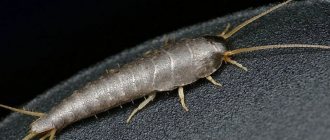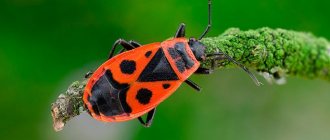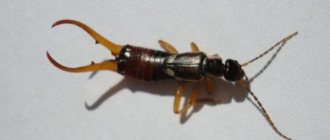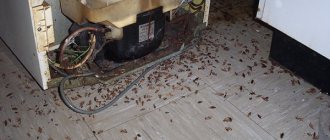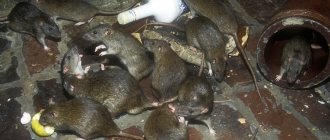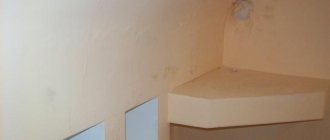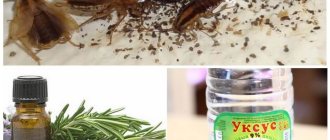“Disgusting, horror and nightmare” is the first thing that comes to mind when meeting a centipede on your property or in your apartment. By the way, she “thinks” the same thing about people, gets scared and quickly retreats. And the first one will not attack, unless you step on it. What kind of creature is this that can make almost every person’s heart beat?
What does a centipede look like, does it bite, is it dangerous or not?
Centipede, or flytrap
The centipede actually does not have 40 legs, but only 30. And it is not an insect, as we used to think, but belongs to the genus of arthropods.
The centipede, or another name for the flycatcher, belongs to the family of centipedes, of which there are up to 12 thousand individuals. Let's take a closer look at the flycatcher.
An adult centipede has a jointed body measuring 3-6 cm, covered with chitin, and 15 legs on one and the other side of the body. The small centipede has fewer legs (only 4 pairs). In an adult, they grow back as they grow older. The first pair of legs are shaped like jaws to capture prey. The last pair of legs is longer than the body itself to allow it to run fast. Flycatchers live 3-7 years.
The flycatcher is a predator. She catches and eats:
- Much
- Cockroaches
- Mole
- Moshek
- Spiders
- Larvae
- Chervyakov
- Bloch
- silverfish
The flycatcher is not dangerous to humans . When meeting people, she does not attack, but quickly hides in a gap. She can only bite when she is in danger. Its venom is weak, there may be a slight redness at the bite site.
If you are nevertheless bitten by a flycatcher, you need to:
- Treat the wound with hydrogen peroxide or alcohol infusion.
- For pain, apply a cold compress.
- There are rare cases of centipede allergies, then take antiallergic and painkillers.
Who are centipedes
It is the appearance of centipedes that forces people to take emergency measures to destroy them. However, not everyone knows that the centipede does not pose a danger to humans and domestic animals. It benefits by eating harmful insects, which include:
- cockroaches,
- ants,
- mole,
- spiders,
- flies,
- bedbugs, etc.
The centipede received its scientific name - common flycatcher - for its ability to destroy other small insects
In their natural habitat, flycatchers live in leaf litter under trees. Insects love warmth and the absence of drafts, so they wait out the winter in secluded places. In houses and apartments, flycatchers prefer rooms with high levels of humidity: bathrooms and toilets, as well as in the basement.
Centipedes are not aggressive, but are capable of biting humans in self-defense. They are barely able to bite through the skin. The centipede's venom is weak, and the bite site does not hurt much. Allergy sufferers are better off avoiding unpleasant encounters with insects. After a flytrap bite, you may experience difficulty breathing, increased heart rate, and swelling of the throat.
Video: what is a centipede
Why do centipedes appear in a house or apartment, and what do they eat in the house?
The centipede will settle in a house where it is damp and humid.
Centipedes live in temperate climates. In the natural environment, they look for damp places under stones and plants. To reproduce, the female flycatcher lays fertilized eggs (60-130 pieces) in moist soil.
When cold weather sets in, centipedes find secluded places, hide there and hibernate until spring. Some flycatchers can crawl into a person’s home and live until the weather warms up, and if the centipede finds a lot of food, it will stay longer.
In a house or apartment, centipedes live in damp basements, toilets and bathrooms. They feed on insects and hunt for them, especially at night. The flycatcher senses its prey by smell and vibration when moving, rushes at it with lightning speed, injects poison that paralyzes the victim, and eats it. If you have a lot of “living creatures”, the centipede will eventually cope with it - it has a good appetite.
Flycatchers do not touch food, books, or flowers stored by humans; they do not hunt domestic animals..
Why do insects appear?
To find out how to get rid of centipedes, you need to understand that the owner of the house is to blame for their appearance, creating favorable conditions for their living. The centipede loves dampness and insects. Crawling home from the street, she looks for food - flies, various beetles, cockroaches. And if he finds her, he stays in this house for a long time. Therefore, the fight against an uninvited guest should begin with the destruction of other insects.
We recommend that you read
A private home is an ideal place for centipedes. During the day, you can hide in the basement, where there is usually increased dampness. At night, no one stops the insect from crawling across the entire area of a person’s home. As soon as the flycatcher sees a food insect, it overtakes it. Her movement speed easily allows her to do this. A centipede can catch more than one bug at a time. During lunch, she holds the other one in her paws.
Not only the basement is a refuge for the centipede. The bathroom is also suitable for her to live in, as there is high humidity. And if there are also pipes leaking in it, and there are dark corners, then the conditions for the insect are simply ideal.
In houses with old natural wood floors, centipedes live in their cracks. But she is afraid of those coatings that are treated with mastic.
Dirty dishes that are constantly left in the kitchen are often attacked by ants and midges. And the flycatcher loves these waste eaters. Therefore, there is a lot of food for her here.
Centipedes in a private house, apartment, why they should not be killed: folk signs
According to folk superstitions, you cannot kill a centipede; if it bothers you, throw it out into the street.
Folk superstitions arose as a result of observations of various incidents in people’s lives over the centuries.
If you believe the signs:
- The appearance of a centipede in the house foreshadows some news or letter.
- To see a centipede running during the day means heavy rain.
- If there are many centipedes in the house, you cannot kill them, but you need to catch one centipede and throw it outside, the rest will run away on their own.
What measures will help get rid of it?
To get rid of an unpleasant neighbor, it is not enough to run after him with a slipper. Considering the centipede's high speed, this is quite difficult and will not save you from the general problem. A more humane way is to try to catch it and take it outside. But to clear a home of centipedes in the long term, it is necessary to deprive it of living conditions. Having achieved this, you will not have to worry about their return or the brood of a whole nest of insects.
Below is a list of actions that will resolve the problem:
- Food deprivation. Destroy the insects they feed on, and then the centipedes will be forced to leave you.
- Make repairs. The arthropod lives in cracks and holes near drains. Seal them up and deprive them of access to housing.
- Eliminate dampness. The insect is moisture-loving; if you get rid of mold and high humidity, they will not be comfortable.
- Deprivation of water. Do not allow water to accumulate; dry your laundry outside.
- Check the condition of your home's basement. This is where all kinds of unpleasant guests usually accumulate.
How to poison, remove a centipede from a house or apartment forever: means of control, poison
You cannot poison centipedes; throw them into wet leaves outside the window.
You cannot kill or poison centipedes with various means because of their small number on our Earth . Usually one or several centipedes can wander into a home, and their reproduction occurs in nature.
If you are uncomfortable with a flycatcher, you can catch it in a jar and release it outside in the spring or summer.
Reasons for appearance
Some species of centipedes, such as the drupe or flycatcher, often inhabit houses and apartments, causing a lot of trouble for residents. The reasons for the appearance are:
- the onset of cold weather outside;
- the presence of an abundant food supply;
- opportunity for safe reproduction.
In the apartment
Centipedes sneak into apartments from basements, attics or entrances. If you don’t get rid of them in time, the arthropod will give rise to abundant offspring, which will begin to terrorize not only you, but also your neighbors.
Apartments attract flycatchers due to:
- favorable living conditions;
- security.
In a private house
Centipedes sneak into private homes from the streets, where they are found in great abundance. Since the area of the house is larger than in the apartment, the uninvited guest is difficult to detect, and he lives for a long time for his own pleasure. Most often, centipede attacks occur in the fall, when the street becomes less comfortable and safe. For places of residence, cracks in the floor, cracks and other secluded corners are selected.
Preventing the appearance of centipedes in a house or apartment: tips
If you keep your house clean, ventilate, and prevent dampness in the bathroom and toilet, centipedes will not get in.
Despite the unpleasant appearance of the centipede, it only brings benefits to people . And if you don’t want to meet her in a house or garden, then you need to clean up the area and prevent humidity in the premises.
To prevent centipedes from starting in your house or apartment, you need to:
- Repair leaking sewer and water pipes.
- Remove everything unnecessary under the bathtub and in the toilet.
- Avoid leaving puddles or wet rags on the bathroom floor.
- Wash off the mold, establish ventilation and ventilate rooms with high humidity.
- Make sure that the kitchen, bathroom and toilet are free of flies, cockroaches, moths, fleas, and silverfish.
- Seal all the cracks in the apartment or house with cement mortar, close the cracks in the wooden floor, and put a mosquito net on the windows.
- Remove rotten boards, old paper and any debris from the basement.
- In the spring, remove last year's leaves from your garden plot in time.
So, if you remove potential food for the flytrap, put things in order in your house, or make living conditions for the centipede not entirely comfortable, it will leave your house or apartment on its own.
Remedies for getting rid of centipedes
When there is a large infestation of insects, there is no time for traps or similar methods. It is necessary to use stronger means. Keep in mind that the first stage is the elimination of their habitat. If it doesn’t help, then use toxic substances.
Chemical
Food poison does not work well against centipedes. The reason is that they are predators. Therefore, for a long time they may not pay attention to the bait left behind. The best way to eliminate centipedes is to use an insecticide in the form of a spray or aerosol. The product must be poured into possible habitats of the insect - bathroom, toilet, baseboards, tiles. Remember safety precautions and apply the product while wearing rubber gloves and a respirator. After using the product, you must leave the house for several hours.
Examples of tools that can help you:
- Aerosol “Clean House”.
- Aerosol "Raptor".
- Aerosol "Combat".
- Aerosol "Raid".
- Emulsions "Medilis".
The presence of a large number of centipedes in the apartment is an indicator of a colony of cockroaches or ants. To overcome centipedes, it will be necessary to remove the pests, otherwise after a while the insects will return in the same numbers. Therefore, complex products that kill both pests and centipedes are also effective.
Folk
If the number of insects is not particularly large, then you can use folk remedies. Keep in mind that despite the fact that the remedy is a folk remedy, its use or careless handling threatens the same poisoning as previous remedies.
Boric acid works well against most parasites and pests. Centipedes are also among the insects that are poisoned by this product. To combat arthropods there is no need to make baits. It is enough to sprinkle boric acid along the cracks of the tiles, holes in the sewer and under the bathtub. But if you know about the existence of food, such as cockroaches, then it is better to make bait with boiled yolk and boric acid. With the disappearance of cockroaches, centipedes will also disappear.
Using cayenne pepper in an unusual way can also help. Dry, then grind into powder and treat areas similar to the use of boric acid. They cannot stand the smell and taste of spicy foods, so they will soon leave your home.
The centipede is an ancient and harmless animal
In fact, it is an animal, not an insect. An arthropod that also has other names:
- centipede;
- flycatcher;
- scolopendra.
And she actually has 30 legs, all of which are capable of completely regenerating if injured or lost. There is also a respiratory organ.
Her body consists of segments that allow her to be nimble and agile. The forelimbs have claws for capturing and holding prey, and the remaining legs have sharp spines, with which it easily moves across any surface. Having grabbed onto the victim, the centipede bites it and injects it with paralyzing poison, and then eats it.
But meeting a person for the latter does not pose any particular danger. Except that psychologically her frightening appearance is impressive. Scolopendras come in different sizes - from 2 to 15 cm, but large individuals can hardly be found in human habitats, except in the tropics, and in Russia species larger than 5 cm have not been found.
Flycatchers are predators, and in nature their role is extremely important in maintaining the natural balance and balance of the number of organisms. The name of this living creature speaks for itself - they catch flies, as well as:
- cockroaches and worms;
- midges and moths;
- wood bugs, spiders;
- larvae of other insects.
Without centipedes, it would be more difficult for humans to fight numerous pests of gardens, vegetable gardens, and nature reserves. In total, there are several thousand species of flycatchers in nature, and they are the oldest inhabitants on Earth.
Short description
The centipede is a representative of arthropods and belongs to the order Centipedes. Many people attribute it to insects, but this is not so. Millipedes number about 12,000 species, found in all corners of the planet. But in Russia, the most common flycatcher is the common flycatcher - a centipede measuring from 3 to 5 cm with many long thin limbs and the same long antennae on the head.
The flycatcher has a light brown color, small black stripes and spots on the body. Each limb is equipped with a sharp claw, which allows the centipede to move along vertical walls at very high speed.
Interesting!
The name centipede does not reflect the exact number of legs of the creature, but indicates a large number of them.
Chemicals for insect control
Many people think about the best ways to remove centipedes from their homes. There are now many known drugs that are used to eliminate such insects. However, experts recommend resorting to this method only in extreme cases. At the same time, you must remember about safety precautions.
Insecticides in the form of powders cope well with the problem. They need to be scattered in places where insects are most often seen.
Substances fall on insects, which leads to poisoning. But such powders do not work at all as bait.
To prevent centipedes from entering the room through windows from the ground, the lower part of the building must also be treated with insecticidal solutions, but only those intended for open air should be used. You need to make a strip at least 1.5 m wide.
Many people think about the best ways to remove centipedes from their homes.
You can get rid of flytraps using the following chemicals:
- Raid - this product is sold in aerosol form. It is used against insects of both crawling and flying types. The product is not toxic. Has a pleasant lavender scent. After treatment, you can stay in the room, but do not forget about ventilation.
- Medilis-cyper is a product in liquid form. It needs to be diluted in water, and then sprayed with the solution in the centipede habitat using a spray bottle. The drug has a wide spectrum of action, so it gets rid of almost all insects in the house. It has a specific aroma, so it is imperative to use protective equipment for the face, hands and entire body.
- Starex is a drug in the form of a spray. They need to process all the cracks where an unwanted guest may be. The product is considered very effective, and its cost is low.
- Lambda Zone - This drug contains lambda-cyhalothrin. The substance is completely harmless for pets and people. It is characterized by a complete absence of aromas.
- Globol-original is a product in the form of a paste. The drug contains deltamethrin and diflubbenzuron. It has almost no aroma, but you need to be very careful when using it. The product is considered very effective - flycatchers will cease to be a problem for a long time.
- Henkel Combat is a product in aerosol form. It has a convenient applicator, thanks to which it is easy to spray the substance, and the active components will penetrate even the most difficult to reach places. The drug is very effective, but you need to keep in mind that it has a very strong aroma. Be sure to follow safety rules when using the spray.
How to get ants out of an apartment
Some people prefer chemical products with natural ingredients. For example, sprays that contain pietrin, a natural substance (chamomile inflorescences crushed to a powder state), are very popular.
You must remember to protect your body, as such products can be toxic. You need to wear special glasses over your eyes and gloves on your hands. On the face - a respirator or a cotton-gauze bandage. Be sure to wear thick, closed clothing to protect your entire body.
Varieties of centipedes
There are many species of centipedes, but most of them are unlikely to be found in homes.
Scolopendra
The most dangerous for humans. Capable of infecting the victim with a poison resembling the composition of scorpion venom.
The sting of a scolopendra is very painful for humans
The bites of this arthropod are not fatal to humans, however, they are painful for 1–2 days.
flycatcher
The house centipede looks like a caterpillar. The insect's body consists of segments (15 or more), each of which has a pair of legs of different lengths. The length of an adult centipede reaches 35–60 mm. The color of the arthropod is usually brown or yellowish-gray with bluish or red-violet stripes along the body.
House centipede - a thunderstorm of spiders, moths, cockroaches
Kivsyak
The length of adults is 2–25 cm. They like humidity. Easily penetrates bathrooms and toilets. Quickly curls up into a spiral when it senses danger.
Sensing danger, it curls up into a spiral.
In times of danger, the nodule secretes a strong-smelling liquid reminiscent of the smell of iodine.
drupe
It reaches 18–30 mm in length. Dark brown, but can be rusty in color. The body is flattened, so it can penetrate into tight spaces. The drupe has 35–49 body segments. The eyes are located on the sides.
During the day, the drupe hides in a shelter, and at night it goes out to hunt.
It feeds on insects and spiders, but can also dine on worms and springtails. The drupe is active at fairly low air temperatures, which allows it to prey on stationary large insects.
There are several groups of arthropods:
- labiopods and bipedal centipedes,
- symphylos and pauropods,
- sea spiders,
- onychophorans.


